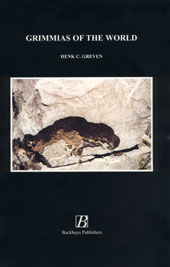
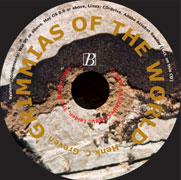


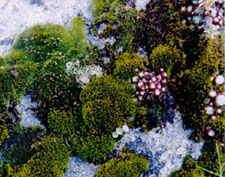
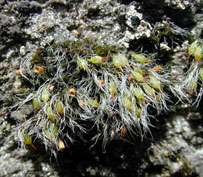
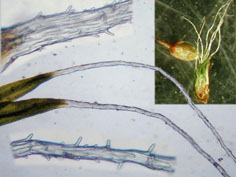
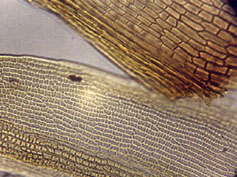
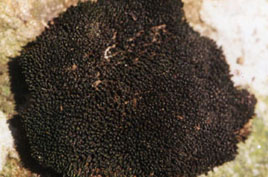

PREFACE
ACKNOWLEDGEMENTS
GRIMMIA Hedw. (1801)
- Introduction - Classification
- Habit
- Habitat - Colour - Hair-point
- Leaf shape - Costa - Areolation
- Sexuality and Capsule Frequency
- Reproduction - Capsules - Hybridisation
- Distribution
INTRODUCTION TO KEYS AND ILLUSTRATIONS
GLOSSARY
KEY TO GRIMMIA IN EUROPE
KEY TO GRIMMIA IN NORTH AMERICA
KEY TO GRIMMIA IN CENTRAL AMERICA
KEY TO GRIMMIA IN SOUTH AMERICA
KEY TO GRIMMIA IN OCEANIA
KEY TO GRIMMIA IN ASIA
KEY TO GRIMMIA IN AUSTRALASIA
KEY TO GRIMMIA IN AFRICA
INDEX
REFERENCES
Grimmia Hedw. is
one of the largest moss genera. The taxa are notorious for their morphological
variability, causing up to now notable identification problems. As a result
of this, revision of herbarium specimens showed that 20-30% had been misidentified.
Lack of overview in the detailed and obscure taxonomy of Grimmia has continuously
led to description of species that had already been described previously, leading
to a Gordian knot with over 800 names in the Index Muscorum (Wijk et al. 1962).
Since 1989, the author has worked on a revision of the European species. The
results of this work have been published in 1995 (Grimmia Hedw. in Europe, Backhuys
Publishers, Leiden, The Netherlands). From 1995 on, the genus has been studied
on a world-wide scale. Up to 2002, about 20.000 herbarium specimens, including
hundreds of types, have been revised and about 50 Grimmia collecting trips have
been made in all continents, with the exception of Antarctica. The aim was to
enumerate as accurately as possible all acceptable Grimmia taxa, and their synonyms.
For a number of countries revisions have been carried out previously. Zetterstedt
(1861) was the first Grimmiologist who revised the Scandinavian Grimmia and
Racomitrium species. Since that time, papers have been published, based on revision
of Grimmia specimens, from the following parts of the world: Europe (Loeske
1930); North America (Jones 1933); Japan Deguchi 1978); China (Cao & Vitt
1986); Europe (Greven 1995), and South America (Muñoz 1999). Recently,
Muñoz & Pando (2000) published a nomenclatural treatment of the genus
in which they recognized 71 species. In the present work 93 species, and 360
valid and legitimate synonyms are recognized. References with respect to the
synonyms are not given, these can be found in Muñoz & Pando (2000).
For each species, literature concerning the protologue, herbarium where the
type specimen is housed, synonyms, geographical distribution in terms of the
Index Muscorum, characters, and references are given. All recognized species
are illustrated and for the majority of the taxa photographs have been included
on a CD-ROM. A world-wide key is not provided because, as a result of the morphological
variability, one key for 93 species does not work. Therefore, keys have been
produced for: Africa, North America, Central America, South America, Oceania,
Asia, Australasia, and Europe.
Doom, November 1, 2002
Henk C. Greven